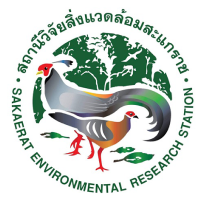Keywords :
Deforestation; Indexes; Physico-chemical Characteristics; Principal Component Analysis;
Soil Degradation; Soil Fertility
บทคัดย่อ :
To find a principal component (PC) that quantifies the degree of soil degradation, we analyzed various physicochemical characteristics of soils over a land degradation gradient related to aboveground vegetation in the Sakacrat Environmental Research Station (SERS), Thailand. The aboveground vegetative types representing the degradation gradient were bare ground (BG, highly degraded), dry dipterocarp forest (DDF, moderately disturbed) and dry evergreen forest (DEF, the original vegetation). Soils under these vegetative types were sampled in February (dry season). March just after temporal precipitation) and June (rainy season) 2001. Through the period of this research, the degradation was consistently explained by sandy texture, high bulk density, lower pH, high exchangeable acidity, poor mineral and organic nutrients and dryness. Principal component analysis (PCA) was applied to determine significant principal components (PCs) that clarify the differences in soil properties between the vegetative types and between the timing of soil sampling. The PC loadings suggested that the first PC was the component that indicates total fertility of soil in the site, while the fifth PC indicates the dry to wet seasonal transition. The first PC was named the total fertility component (TFC). The linear regression between the TFC score and recently proposed indexes, the soil fertility index (SFI) or the soil evaluation factor (SEF), was highly significant (p < 0.001), indicating that the SFI and the SEF are applicable to measuring total fertility of soils in the SERS.
เอกสารอ้างอิง :
Doi, R., & Sakurai, K. (2004). Principal Components Derived from Soil Physicochemical Data Explained A Land Degradation Gradient, And Suggested the Applicability of New Indexes for Estimation of Soil Productivity in The Sakaerat Environmental Research Station, Thailand. The International Journal of Sustainable Development & World Ecology, 11(3), 298-311.



